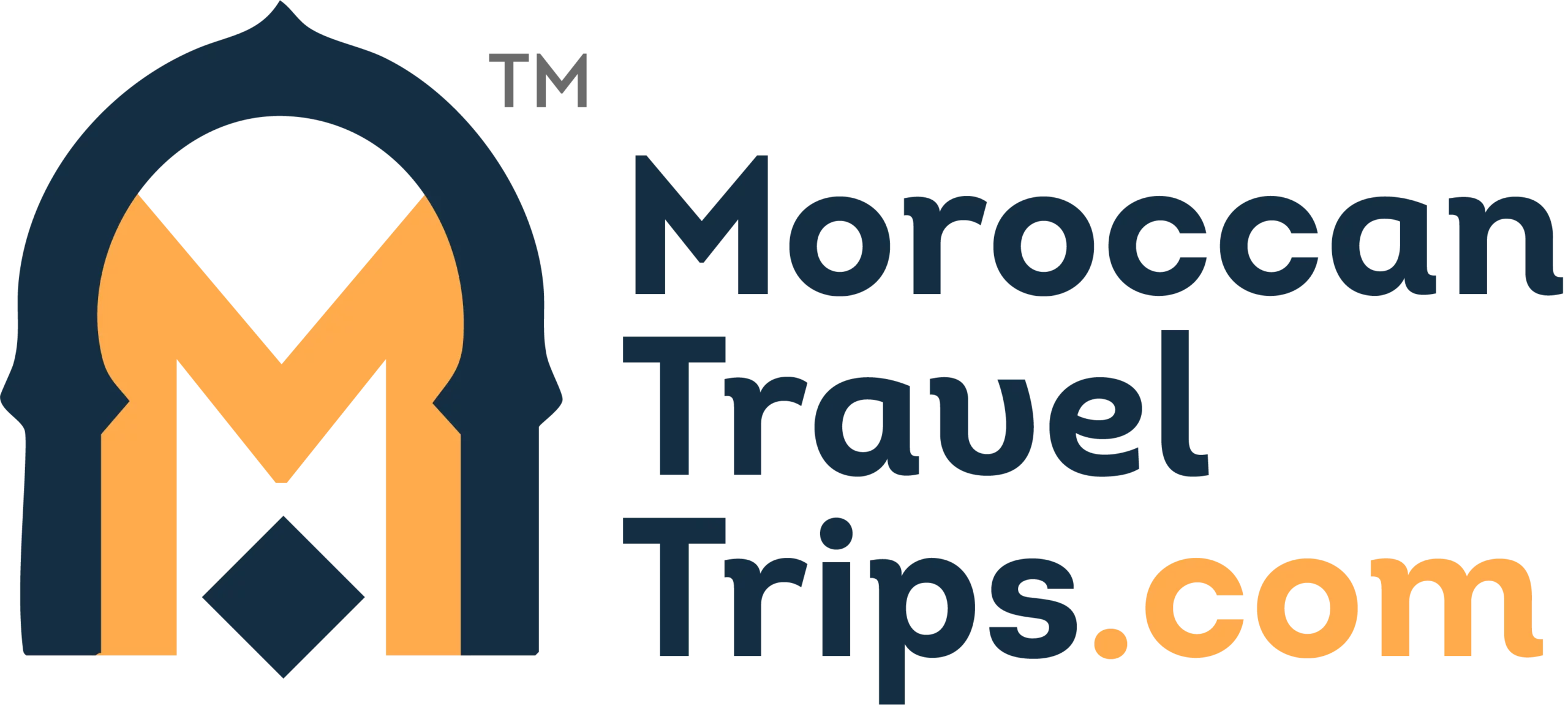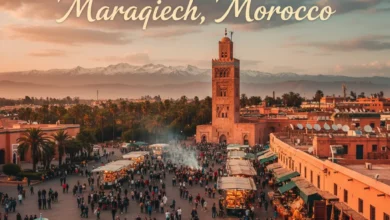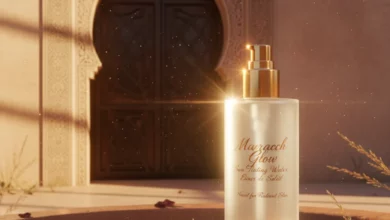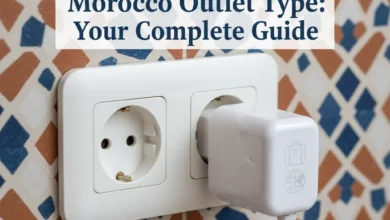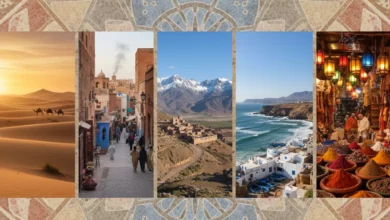🏺 Best Time to Visit Morocco: Weather, Festivals, and Travel Tips
Your Complete Guide to Morocco’s Climate, Seasons, and Cultural Celebrations
Planning when to go to Morocco can make or break your travel experience. From the bustling souks of Marrakech to the golden dunes of the Sahara Desert, Morocco’s diverse landscapes and rich cultural heritage offer something spectacular year-round. However, understanding Morocco weather by month, seasonal festivals, and regional climate variations will help you choose the perfect time for your Moroccan adventure.
🌟 Quick Answer: Best Time to Visit Morocco
The best time to visit Morocco is during spring (March-May) and fall (September-November) when temperatures are comfortable across all regions. These Morocco travel seasons offer pleasant weather, fewer crowds, and ideal conditions for exploring everything from imperial cities to desert landscapes.
🗓️ Morocco Travel Seasons Overview
Spring is widely considered the best time to visit Morocco. The Morocco climate during these months offers perfect conditions for sightseeing, with comfortable temperatures and blooming landscapes across the country.
✅ Advantages
- • Perfect weather for all activities
- • Beautiful blooming landscapes
- • Comfortable desert temperatures
- • Ideal for Atlas Mountains hiking
⚠️ Considerations
- • Peak tourist season
- • Higher accommodation prices
- • Occasional spring showers
- • Popular sites can be crowded
Summer brings intense heat to most of Morocco, making it challenging for extensive sightseeing. However, coastal areas remain pleasant, and it’s the best month to travel to Morocco for beach lovers and those seeking fewer crowds.
🏖️ Atlantic Coast: 18°C – 28°C (64°F – 82°F)
🏙️ Inland Cities: 30°C – 45°C (86°F – 113°F)
🏜️ Sahara Desert: Can exceed 50°C (122°F)
Fall rivals spring as the best time to visit Morocco. After the scorching summer heat, September brings relief with comfortable temperatures perfect for all types of Morocco travel.
Winter in Morocco offers mild daytime temperatures but can be surprisingly cold at night, especially in the mountains and desert. It’s the best season for budget travelers and those seeking authentic local experiences.
📅 Morocco Weather by Month Guide
Temperature: 5°C – 19°C (41°F – 66°F)
Rainfall: 60-77mm
Cool and wet month with possible snow in Atlas Mountains. Great for budget travelers and cultural experiences.
Temperature: 7°C – 21°C (45°F – 70°F)
Rainfall: 58-74mm
Almond blossoms begin! Perfect for Tafraoute Almond Blossom Festival and fewer crowds.
Temperature: 10°C – 24°C (50°F – 75°F)
Rainfall: 38-61mm
Spring begins! Excellent weather starts, perfect for all regions. Ramadan may occur.
Temperature: 12°C – 26°C (54°F – 79°F)
Rainfall: 32-62mm
Peak spring season. Ideal weather for sightseeing, hiking, and desert tours.
Temperature: 15°C – 30°C (59°F – 86°F)
Rainfall: 20-25mm
Last month of perfect weather before summer heat. Rose Festival in Kalaat M’Gouna.
Temperature: 18°C – 34°C (64°F – 93°F)
Rainfall: 2-10mm
Heat begins inland. Great for coast. Gnaoua Music Festival in Essaouira.
🎭 Morocco Festivals and Events
Understanding Morocco festivals and events can significantly enhance your travel experience. From religious celebrations to cultural festivals, Morocco’s event calendar offers unique insights into local traditions and customs.
When: February (second week)
Where: Tafraoute
Celebrate the stunning pink and white almond blossoms with traditional Berber music, dancing, and local almond products. The entire valley transforms into a magical pink wonderland.
When: Late April – Early May
Where: Kalaat M’Gouna (Valley of Roses)
Experience the harvest of Damask roses with parades, music, dancing, and the crowning of the Rose Queen. The air fills with the incredible scent of blooming roses.
When: Late June
Where: Essaouira
One of Morocco’s most popular festivals, attracting over 500,000 visitors annually. Features traditional Gnaoua music alongside international artists.
When: Dates vary yearly (2025: March 1-30)
Where: Nationwide
Experience Morocco’s most sacred month with unique cultural insights, evening celebrations, and special iftar meals. A transformative cultural experience for visitors.
When: November/December
Where: Marrakech
Morocco’s premier film festival attracting international filmmakers, actors, and cinema enthusiasts from around the world.
🗺️ Regional Climate Guide
🏖️ Atlantic Coast (Casablanca, Essaouira, Agadir)
Climate Type: Mediterranean coastal climate
Best Time: Year-round, especially June-September for beaches
Characteristics: Mild temperatures, ocean breezes, less extreme weather variations. Perfect for summer when inland areas become too hot.
🏛️ Imperial Cities (Marrakech, Fes, Meknes)
Climate Type: Continental semi-arid
Best Time: March-May, September-November
Characteristics: Hot, dry summers reaching 40°C+, mild winters with cool nights. Significant day/night temperature variations.
⛰️ Atlas Mountains
Climate Type: Alpine mountain climate
Best Time: April-October for hiking
Characteristics: Snow in winter, cool summers, significant altitude-based temperature variations. Pack warm layers even in summer.
🏜️ Sahara Desert
Climate Type: Hot desert climate
Best Time: October-April
Characteristics: Extreme heat in summer (50°C+), surprisingly cold winter nights, minimal rainfall. Dramatic day/night temperature swings.
💡 Essential Morocco Travel Tips
🧳 Morocco Temperature Guide: What to Pack
- Layering is key: Pack clothes you can easily add or remove as temperatures fluctuate throughout the day
- Modest clothing: Respect local customs with covered shoulders and knees, especially in rural areas
- Desert essentials: Bring warm layers for cold desert nights, even in summer
- Sun protection: High-SPF sunscreen, hat, and sunglasses are crucial year-round
- Comfortable footwear: Closed-toe shoes for dusty medinas and desert tours
🌡️ Seasonal Packing Recommendations
- Spring/Fall: Light layers, light jacket for evenings, comfortable walking shoes
- Summer: Lightweight, breathable fabrics, wide-brimmed hat, cooling towel
- Winter: Warm layers, waterproof jacket, sturdy shoes for wet conditions
- Year-round: Scarf (useful for sun, sand, and cultural sites), reusable water bottle
🏕️ Activity-Specific Considerations
- Desert camping: Warm sleeping bag or blankets, even in summer months
- Atlas Mountains hiking: Proper hiking boots, thermal layers, rain gear
- Coastal activities: Swimwear, light cover-up, water-resistant clothing
- City exploration: Comfortable walking shoes, day pack, modest cultural attire
🌟 Expert Tip: Morocco Summer vs Winter
Summer Strategy: If visiting in summer, start sightseeing early morning (7-10 AM), rest during midday heat (11 AM-4 PM), resume activities in late afternoon/evening. Coastal areas like Essaouira remain comfortable.
Winter Strategy: Pack layers for dramatic temperature changes. Desert nights can drop to near freezing, while days remain pleasant. Rain is most likely November-March.
🌟 Plan Your Perfect Morocco Journey
Now that you understand when to go to Morocco and what to expect from Morocco weather by month, you’re ready to plan an unforgettable adventure. Whether you choose the perfect spring weather, the festival-rich autumn months, or the authentic winter experience, Morocco offers magic in every season.
Remember: the best time to visit Morocco depends on your preferences, activities, and tolerance for crowds and weather extremes. Use this guide to match your travel style with Morocco’s diverse climate and cultural calendar.
